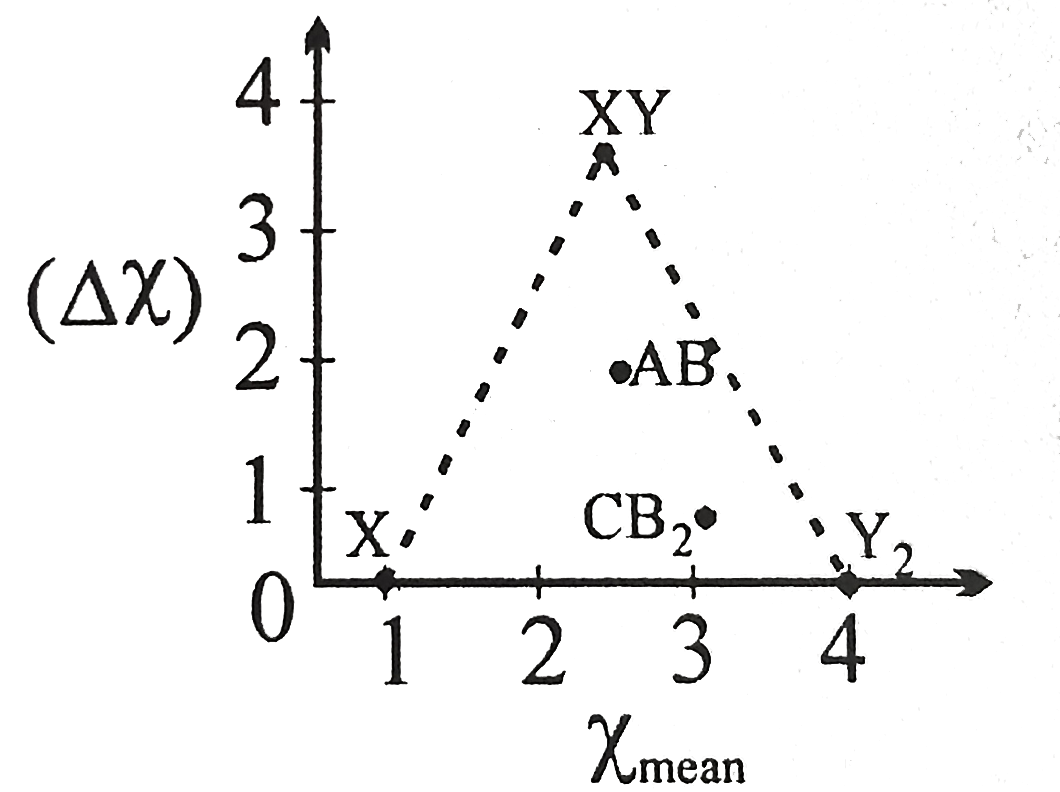In which of the following compound the bonds have the largest percentage of ionic character ?Solution in Odia
H2O
HF
IBr
N2O4
The correct Answer is:B
Step by step video, text & image solution for In which of the following compound the bonds have the largest percentage of ionic character ? by Chemistry experts to help you in doubts & scoring excellent marks in Class 12 exams.
Updated on:21/07/2023Topper's Solved these Questions
Similar Questions
Name two fibrous proteins.
View SolutionProve that time required for the completion of 3/4 of reaction of the 1st order reaction is twice the time required for the completion of half of the reaction.
View SolutionA Ketelaar triangle showing a plot of average electrongativity (χmean) against electronegativity difference (Δχ)can be used to classify the bond type for binary compound. Which of the following compounds has highest percentage of ionic character ?

View SolutionWhich of the following compound have covalent and ionic bond ?
View SolutionPercentage of ionic character is maximum in-
View SolutionWhich of the following has the highest percentage of ionic character in its bonding?
View SolutionThe dipole moment of HCl is 1.03D, if H-Cl bond distance is 1.26Å, what is the percentage of ionic character in the H-Cl bond?
View SolutionCalculate the percentage ionic and covalent character of HF molecule having bond distance =0.92Å and dipole moment =1.78D
View SolutionThe percentage ionic character of a bond having 1.275Å its length hand 1.03 D its dipole moment is :
View Solutionक्लोरीन के निम्नलिखित यौगिकों में से किसमें आयनिक सहसंयोजी दोनों बन्ध होते हैं
View SolutionWhich possesses highest percentage of ionic character
View SolutionDipole moment of HCl is 1.03D. Bond length is 1.27A^@ . Calculate the percentage ionic character of the HCl bond.
View SolutionThe dipoleoment of HX is 1.2D. If the % ionic character of the bond is 25%, then it.s bond length isd
View SolutionWhich possesses highest percentage of ionic character:
View SolutionDipole Moment in Isomers||Comparison Calculation OF % ionic Characters||Back-bonding
View Solution
